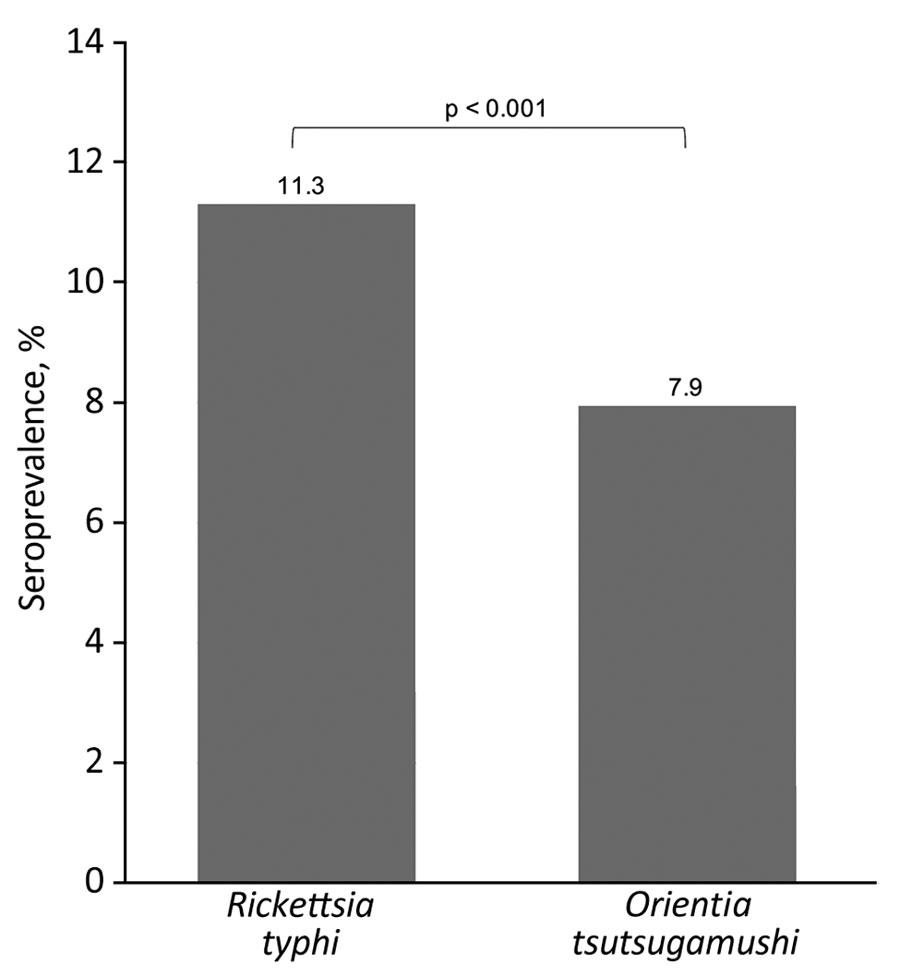Volume 29, Number 7—July 2023
Dispatch
Nonnegligible Seroprevalence and Predictors of Murine Typhus, Japan
Figure 1

Figure 1. Seroprevalence rates of Rickettsia typhi and Orientia tsutsugamushi in study of seroprevalence and predictors of murine typhus, Japan. R. typhi IgG was detected in 11.3% (95% CI 10.0–12.6) of participants and O. tsutsugamushi IgG was detected in 7.9% (95% CI 6.9–9.1) of all participants. The seroprevalence of both infections was compared using the McNemar test. The estimated seropositivity ratio was 1.42 (95% CI 1.20–1.68).
Page created: May 21, 2023
Page updated: June 20, 2023
Page reviewed: June 20, 2023
The conclusions, findings, and opinions expressed by authors contributing to this journal do not necessarily reflect the official position of the U.S. Department of Health and Human Services, the Public Health Service, the Centers for Disease Control and Prevention, or the authors' affiliated institutions. Use of trade names is for identification only and does not imply endorsement by any of the groups named above.